An author’s job: It’s not just writing
It’s no secret that only half an author’s job is the actual writing of a book. The other half falls squarely in the realm of marketing. If you’re like me, spending that much time trying to build your brand and reach a wider audience is not what you want to be doing.
Social media
While it’s true that social media has become a critical component of marketing strategies for brands, and while I spent years bobbing back and forth between various social media platforms, I found that while they might nudge the sales needle, they don’t significantly move it.
All of this made me reflect on how I was using my time and energy versus how I should be using it.
So…
- I post and interact on Facebook, but not as often as I used to.
- I post on Instagram, but somewhat irregularly (and I repurpose/resize my Pinterest pins).
- I stopped creating TikTok videos.
- I never started Patreon.
- I rarely use Twitter/X for my writing (although I do use it for my WriterSpark Academy and Book Cover Design).
- I began going all in on Pinterest.
Pinterest statistics
When I started researching, it didn’t take long for me to understand the power of Pinterest.
- Pinterest has more than 478 million active users.
- 2.37% growth every month.
- 96 million users in the U.S.
A total of 478 million people is a huge potential audience I hadn’t even considered tapping into.
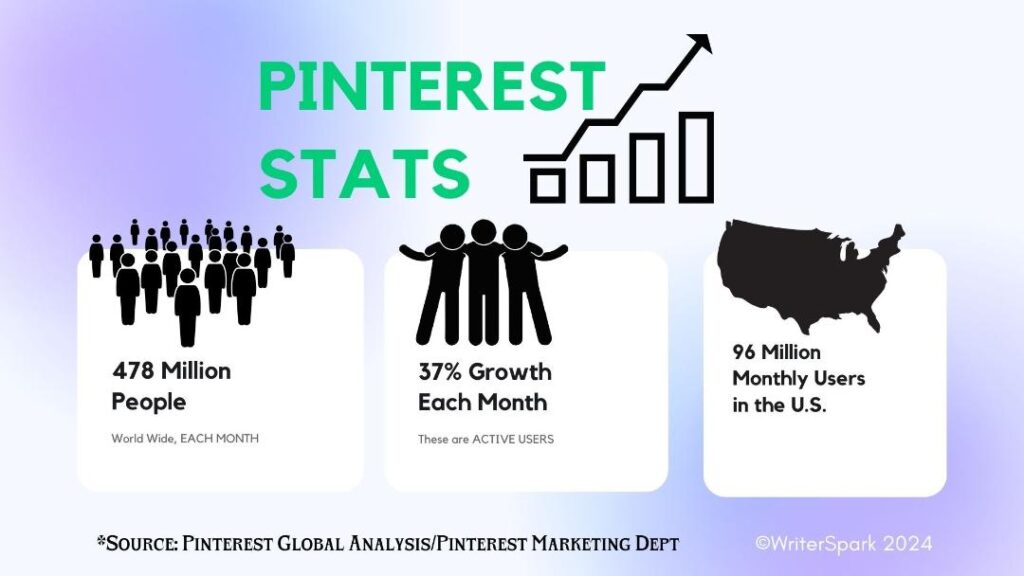
But wait, there’s more.
- 80% of U.S. moms use Pinterest.
- One in two Millennials use Pinterest.
- 76% of U.S. Millennial women use Pinterest.
- 40% of U.S. Millennial men use Pinterest.
- 50% of U.S. adults use Pinterest.
- One in three U.S. dads use Pinterest.
- 57% of U.S. users with a household income of $100K+ use Pinterest.
- One in two U.S. Gen Z (mid-1990s–2010 birth) use Pinterest.
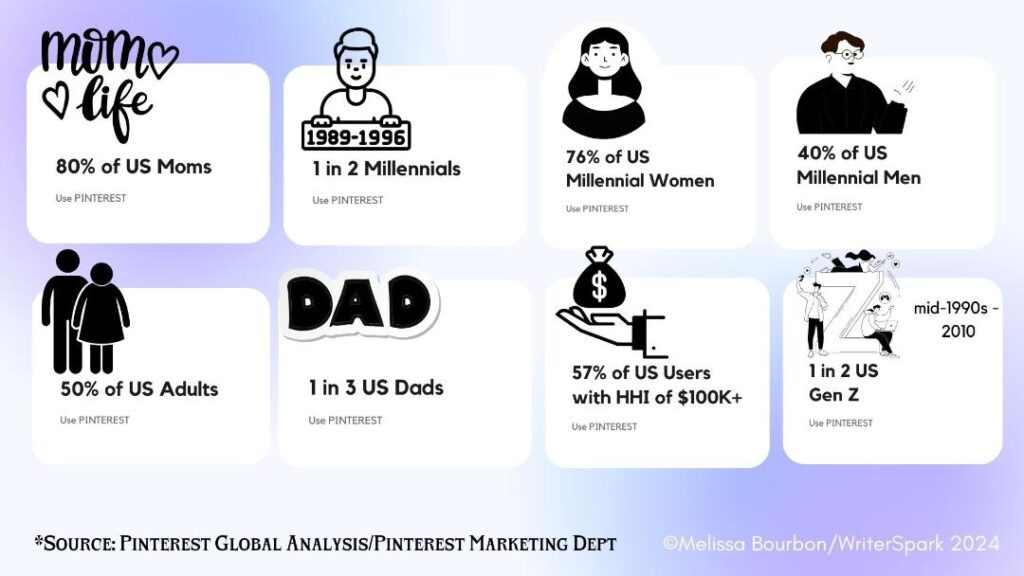
These stats are significant. They showed me the potential Pinterest could play in my efforts to reach my target readers.
(Source: Pinterest Global Analysis/Marketing Department)
How is Pinterest a search engine?
It’s important to understand that Pinterest is not a social media platform. It is a search engine. It mirrors some social media platforms in some ways (scrolling through images with the option to “like” them). But more than this, it is a tool people use to seek answers to questions, resolutions to problems, or ideas to use in real life. They go to Pinterest for different reasons than folks go to other social media platforms. They go to Pinterest wanting to discover something connected to their interests.
On Pinterest, they can search for inspiration, products, or instructions. They can save pins for recipes, home decor ideas, DIY projects, and … yes … books.
How can authors leverage Pinterest as an effective marketing tool?
Pinterest is a visual-heavy platform on which you can showcase your books to attract potential readers. From creating simple pins to videos to calls to action and implementing targeted SEO, there are many ways an author can tap into the power of Pinterest. Once you capture the interest of your target audience, you direct them to your website, your newsletter sign-up page, or straight to a sales link to purchase your book. It’s that simple.
10 tips to maximize Pinterest as an author marketing tool
- Create a business account: Think of yourself as a small business owner. That’s what you are, after all. As such, you want to create a business account that gives you access to the Business Hub where you can see analytics, create ads, and utilize carousels, among other things. There are three ways to go about this:
-
- Create a separate business account with its own email.
- Convert your existing personal account to a business account.
- Create a business account that is linked to your personal account and toggle between them.
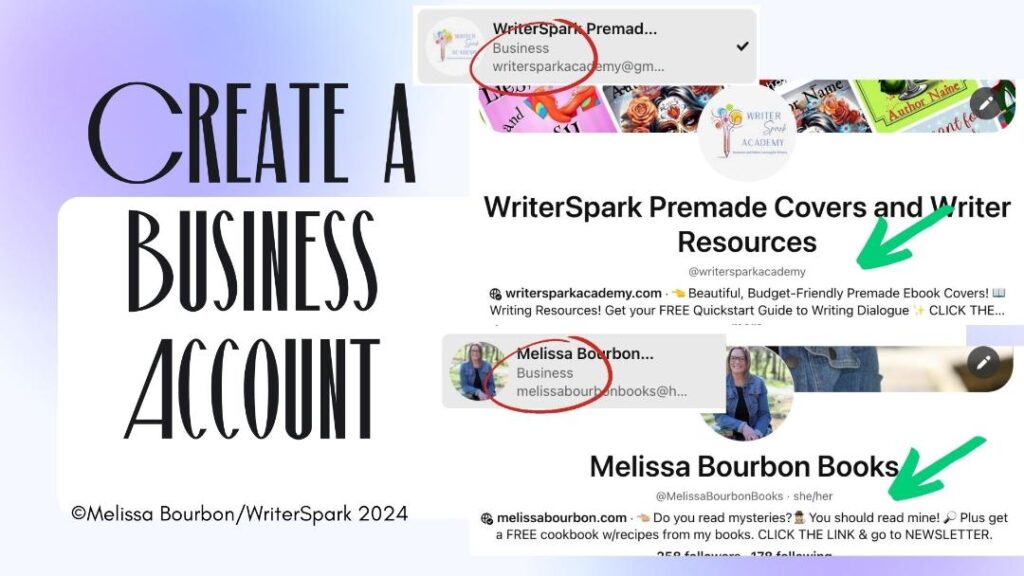
- Create boards that reflect your book themes: Build boards that relate to your books. This can mean boards on themes, settings, and/or characters in your book, series, or something else. Get creative! For example, if you have a cozy mystery series set in a quaint beach town, create boards featuring images of small beach towns, mysterious landscapes, or character inspirations. I have a board about Wednesday Addams based on the plot elements of my book, Bobbin for Answers. Wednesday is popular so that board gets a lot of traffic and saves. As a result, that book sells very well.
- Pin and create visually appealing content: Pinterest is all about visuals. Create high-quality images, graphics, and infographics that catch the eye and align with your brand or book’s aesthetic. Include book covers, quotes, and behind-the-scenes glimpses to attract and engage your audience. I use Canva and BookBrush to create my pins.
- Use keywords: Use keyword-rich (i.e. searchable terms) descriptions to improve discoverability. This means using relevant keywords related to your book genre, themes, and topics to attract users who are searching for similar content.
- Pin consistently: Pin on the regular! In this respect, your presence on Pinterest mirrors that of other social media. You have to be consistent to be seen. I batch-create and schedule my pins. If you like to be organized, create a schedule to ensure a steady flow of content. Finally, pin at peak times (when your target audience is most active) to increase visibility and engagement.
- Be strategic: If you want to be strategic in your approach to Pinterest, interact with other users by re-pinning their pins, and liking and commenting on their content. Follow boards and users within your niche/genre to help build relationships. This can expand your reach. Participating in group boards and collaborations can also help you reach a wider audience.
- Link to your blog posts, website, and sales pages: If you have a blog or author website, use Pinterest to drive traffic to your content there. Create visually appealing pins for your blog posts, articles, and book excerpts, then send users to those URLs, as well as directly to sales pages.
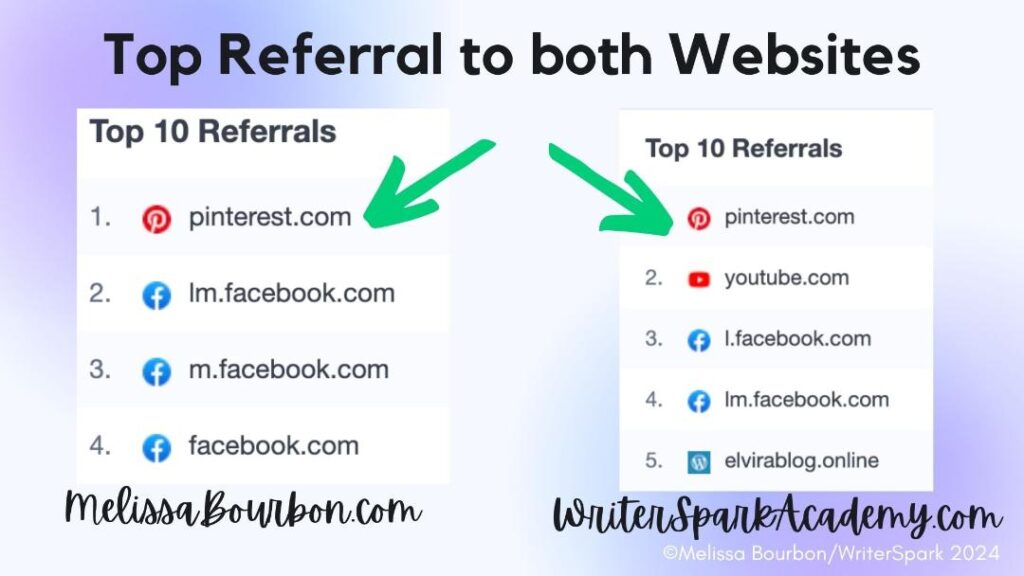
- Create “fresh” pins and multiples: A “fresh” pin is something that hasn’t been pinned before. This doesn’t mean the content needs to be new. Create multiple pins based on the same content. Use templates to make it easy (I use Canva). Change up where you link to, as well.
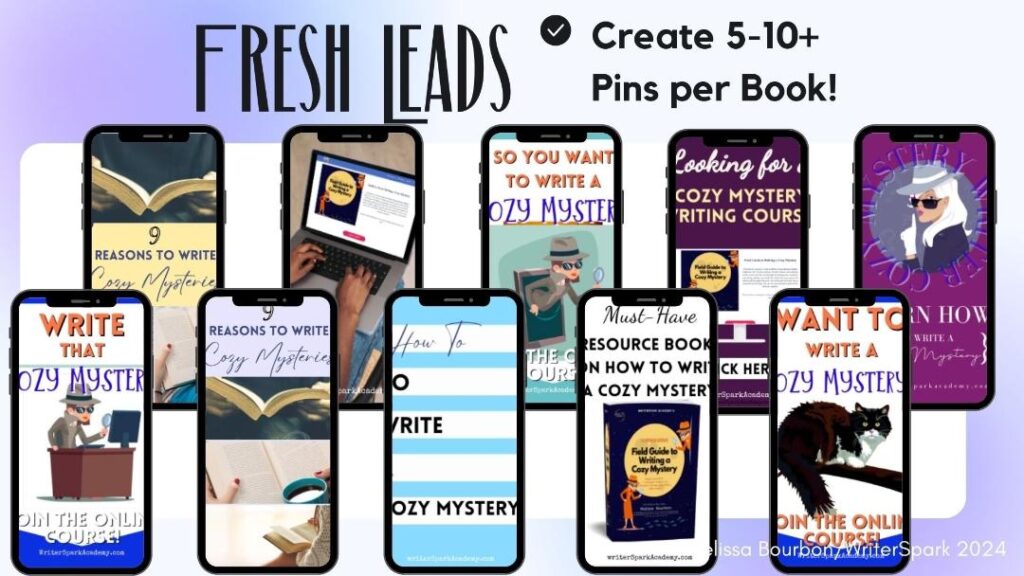
- Set up rich pins: Pinterest has a feature called “rich pins.” This allows it to pull information straight from the linked source (like recipe ingredients). This feature enriches your pins.
- Vary the types of pins you create: There are several types of pins: standard photo/image; video; product; and animated. Each type tends to get different types of engagement (saves, clicks, follows, views). Change up the types of pins you create and post.
A word about copyright
Always remember that you don’t want to infringe on someone’s copyright by posting an image from the web without credit. A good rule of thumb is if an image you find on the internet has the Pinterest button for sharing, then that person is giving permission.
Follow these three tips:
- Share your own creative content knowing that by posting it, it can be shared.
- Go forth and re-pin other images on Pinterest, but keep them on Pinterest. Don’t go sharing them off-site.
- Be aware of copyright because even if you re-pin something that someone else infringed upon, you are responsible. So know whose photo/image it is and credit the creator.
Pinterest’s copyright policy: https://policy.pinterest.com/en/copyright
Final thoughts
You can do a few final things as you dive into Pinterest.
- Create an engaging author profile. It should explain who you are and what you write about. Make it interesting and be sure to link to your website.
- Move beyond using Pinterest as an exclusive self-promotion platform. Be sure to engage with other users in the Pinterest community; share or re-pin relevant pins and comment on posts that interest you—this will make your profile more engaging.
- Host contests and giveaways: This can help engage your audience and attract new followers. Encourage folks to re-pin your content, follow your boards, or create their own boards related to your book for a chance to win prizes like signed copies or bonus material.
- Learn more about Pinterest’s SEO capabilities. Like Google, Pinterest is a search engine that uses an algorithm to operate. To make your content discoverable, explore and tap into current trends in Pinterest, and use keyword-rich descriptions, board names, ALT text, and even profile information. Also, images are searchable so give your images keyword-rich titles.
Pinterest can be an extremely effective marketing tool for authors. It’s not about how many followers you have/get. It’s about visibility and engagement on your pins/boards. Using the platform effectively can help you promote your brand, engage with your target audience, and drive traffic back to your website, blog, or book sales page. It has the powerful trifecta of tapping into creativity, content sharing, and user engagement. Plus it’s fun!
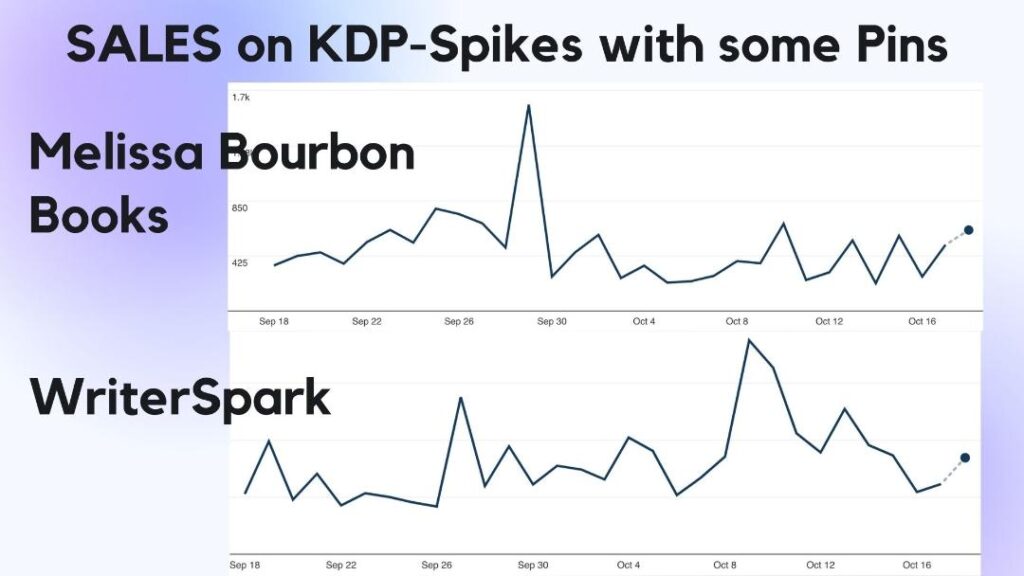
Happy pinning!
________________________

Melissa Bourbon is a national bestselling author of more than 30 novels and founder of WriterSpark Academy and WriterSpark Book Cover Design, as well as a teacher and presenter. Follow her on Pinterest at: https://www.pinterest.com/writersparkacademy/ and https://www.pinterest.com/MelissaBourbonBooks.
